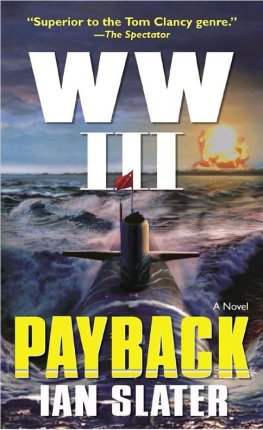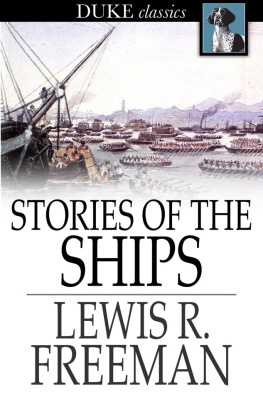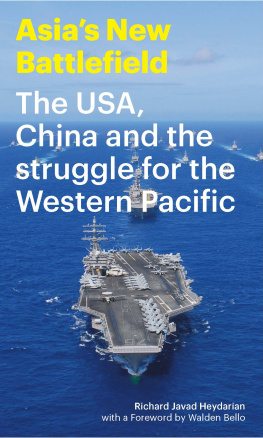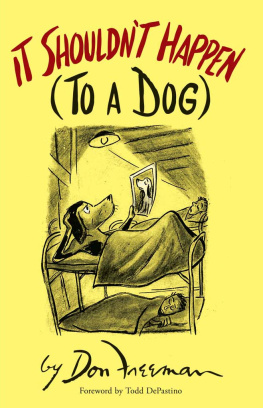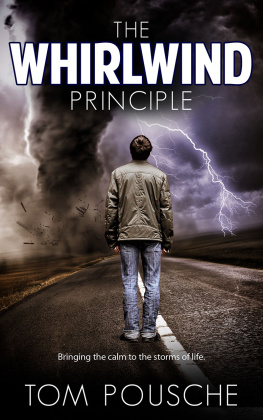Richard Freeman - Whirlwind: War in the Pacific
Here you can read online Richard Freeman - Whirlwind: War in the Pacific full text of the book (entire story) in english for free. Download pdf and epub, get meaning, cover and reviews about this ebook. year: 2019, publisher: Lume Books, genre: History. Description of the work, (preface) as well as reviews are available. Best literature library LitArk.com created for fans of good reading and offers a wide selection of genres:
Romance novel
Science fiction
Adventure
Detective
Science
History
Home and family
Prose
Art
Politics
Computer
Non-fiction
Religion
Business
Children
Humor
Choose a favorite category and find really read worthwhile books. Enjoy immersion in the world of imagination, feel the emotions of the characters or learn something new for yourself, make an fascinating discovery.

- Book:Whirlwind: War in the Pacific
- Author:
- Publisher:Lume Books
- Genre:
- Year:2019
- Rating:5 / 5
- Favourites:Add to favourites
- Your mark:
- 100
- 1
- 2
- 3
- 4
- 5
Whirlwind: War in the Pacific: summary, description and annotation
We offer to read an annotation, description, summary or preface (depends on what the author of the book "Whirlwind: War in the Pacific" wrote himself). If you haven't found the necessary information about the book — write in the comments, we will try to find it.
Whirlwind: War in the Pacific — read online for free the complete book (whole text) full work
Below is the text of the book, divided by pages. System saving the place of the last page read, allows you to conveniently read the book "Whirlwind: War in the Pacific" online for free, without having to search again every time where you left off. Put a bookmark, and you can go to the page where you finished reading at any time.
Font size:
Interval:
Bookmark:
WHIRLWIND
War in the Pacific: Pearl Harbour, Coral Sea, Midway
Richard Freeman
Richard Freeman 2013
Richard Freeman has asserted his rights under the Copyright, Design and Patents Act, 1988, to be identified as the author of this work.
First published in 2013 by Endeavour Press Ltd.
This edition published in 2019 by Lume Books.
Table of Contents
Introduction
The story of the first six months of 1942 in the Pacific is that of one country at the height of its power attacking another at the nadir of its influence.
The United States withdrew from world affairs after the First World War, first refusing to ratify the Treaty of Versailles and then declining to join the League of Nations. These actions left Japan free to raid and occupy the Pacific rim at will. America turned her back as Japan invaded country after country: Manchuria in 1931; China in 1937; French Indochina in 1940. Matters came to a head when President Roosevelt placed an oil embargo on Japan in July 1941.
Then came retaliation at Pearl Harbor in December 1941, where America lost over 2000 men and nearly 200 planes. Nineteen ships were damaged, including eight battleships of which four were left sitting on the harbour mud. It was a defeat on an unimaginable scale. Yet, in just six months, America turned the rout of Pearl Harbor into the victories of Coral Sea and Midway.
The story of how America achieved this staggering turnaround is told here using accounts of the three key Pacific battles of 1942. Our story starts with a country determined not to go to war. So determined as to not even take the most elementary steps to protect the peace. At Pearl Harbor planes were kept on four hour standby, while scouting sorties were only sporadically undertaken. Planes were massed together in tight squares, the radar was only manned intermittently, and the commanders dismissed the suggestion that a surprise attack was possible.
How did a nation so unready overcome Pearl Harbor? The answer is Admiral Chester Nimitz. Appointed to the Pacific Fleet after the December 1941 debacle, he trained up his men through minor raids and attacks. These enabled the American commanders to understand their enemy, while the pilots gained important battle experience. By May Nimitz had created an unbeatable force, ready to answer the Japanese. He first released this force at Coral Sea, where the carriers Lexington and Yorktown took on a Japanese fleet under Vice Admiral Inoue. Inoues object was to invade Port Moresby. Admiral Frank Fletcher, at the cost of one carrier, halted Inoues advance. The apparently indomitable Japan had suffered a severe setback.
But Coral Sea was nothing like the setback at Midway a month later. There Fletchers force sent four Japanese carriers to the bottom. Never again did the Japanese Navy seriously threaten the Americans.
Pearl Harbor, Coral Sea, Midway was a military progression of textbook meticulousness. The first action was the defeat of the ill-prepared. Coral Sea was the just-big-enough victory of a fleet that had rebuilt itself. That battle quashed the assumed invincibility of the Japanese and established the Pacific Fleet as a force to be feared. But the great triumph of this trio was Midway, which marked the beginning of Americas super-power status. After Midway Japan would only defend what she had taken.
Pearl Harbor: Hinge of War
Note on times
Dates and times are all local unless otherwise stated. Washington is 5 hours ahead of Hawaii. Japan is 19 hours ahead of Hawaii, since the International Date Line falls between the two countries.
Maps
The following maps provide further details of the locations and the attack:
The First Air Fleets journey :
http://www.google.co.uk/imgres?imgurl=http://upload.wikimedia.org/wikipedia/commons/0/05/PearlHarborCarrierChart.jpg&imgrefurl=http://en.wikipedia.org/wiki/File:PearlHarborCarrierChart.jpg&h=710&w=1004&sz=214&tbnid=crEOIX4LVBdXjM:&tbnh=86&tbnw=122&prev=/search%3Fq%3DPearl%2BHarbor%2BCarrier%2BChart%26tbm%3Disch%26tbo%3Du&zoom=1&q=Pearl+Harbor+Carrier+Chart&usg=__EMcVRTg8zTTW9FYy4KBgs3CIbR0=&docid=1buVZLY_kbJmUM&hl=en&sa=X&ei=VFq3UL_WH6KM0wWr8YG4AQ&sqi=2&ved=0CC4Q9QEwAA&dur=1413
The island of Oahu and its bases :
http://pearlharborstories.com/oahuMap.php
Pearl Harbor, 7 December 1941 :
http://www.google.co.uk/imgres?q=map+first+air+fleet+1941&hl=en&sa=X&tbo=d&biw=1180&bih=657&tbm=isch&tbnid=YFXHPdBnNdJD3M:&imgrefurl=http://www.wxow.com/story/18781419/m&docid=f1CMJlFfs-oQwM&imgurl=http://wxow.images.worldnow.com/images/1664027_G.gif&w=511&h=430&ei=XFm3UOfdEYWI0AWhh4DIBw&zoom=1&iact=hc&vpx=12&vpy=12&dur=357&hovh=181&hovw=215&tx=59&ty=54&sig=104106003446549240594&page=2&tbnh=127&tbnw=151&start=20&ndsp=29&ved=1t:429,r:20,s:0,i:149
1 Sunday morning, 7 December 1941
Sunday at Pearl Harbor was a day of rest, relaxation and church going. For those men recently returned from exercises at sea there was shore leave. Many were absent from their ships on the fateful day. Others were rising slowly after a good night out in Honolulu. There were letters to write, uniforms to press, lockers to tidy. But, as Marine Private Art Wells recalled, many would die with a shoe still in hand, or with thoughts of how to word the next sentence in a letter, or with mouths open as they began the next sea story.
At the moment of attack most of the early risers were getting ready for church some of the earliest victims would be men in church boats being ferried to the dock side. Others had work to do, Sunday or no Sunday. As the first planes roared over Ford Island, baker Dale Augerson had just put a batch of apple pies into an oven on board the West Virginia. The already cooked chocolate cakes were cooling when the PA blasted out Fire and Rescue report to Ford Island. On the Nevada the band stood ready to strike up The Star Spangled Banner. The first few notes rang out as a plane swooped low to strafe the deck. Not one of the marines was touched, but moments later they were left standing under a shredded American flag feebly hanging at half-mast.
Lewis Shaw, a Pharmacists Mate on the minelayer Oglal a , was in the shower. And, on the battleship Utah Robert Swift was busy doing his Christmas cards for his family back in Tennessee. More mundanely, the surprise attack left men no chance to choose the clothes they would fight in. Some were in pyjamas, some in slippers. Mickey Ganitch on the Pennsylvania went to general quarters in his football gear.
Ninety minutes later 2403 American service men lay dead amongst the wreckage or floating in the harbour. Of the 301 aeroplanes on the island that morning only 52 were now useable. In the harbour the eight mighty battleships lay stricken in the fiery water. From hangers, airstrips, docks and planes flames leapt into the sky. The air was thick with acrid smoke and the sea ablaze with fuel oil from ruptured fuel tanks. Pearl Harbor and Oahus airstrips had suffered one of the fastest and most destructive surprise attacks in all history. And they had said it could not happen. Oahu was, officially, The strongest fortress in the world.
America had sleep-walked into Pearl Harbor.
2. A waking empire
At the end of the First World War the principal central powers (Germany, Austria-Hungary and Turkey) had lost their empires while the victorious allies were exhausted and war-weary. A world-wide revulsion towards war set in as nations tried to limit each others armaments. On her exit from the First World War America had sought to disengage herself from world affairs. President Wilson, after driving forward the Versailles Treaty negotiations, returned home only to find that the Senate rejected the treaty in 1919. In the same year America decided not to join the newly formed League of Nations. Two years later America took a leading part in the Washington Naval Conference of 1921-22. With the aid of her espionage, America out-witted Japan when she forced through an agreement that firmly suppressed the latters imperial ambitions. The American, British and Japanese navies were to be limited to fleets in the ratio 5:5:3. Japan smarted at this demotion and began to see America as a threat to her territorial ambitions. Americas simultaneous attempt to withdraw from world affairs while annoying Japan proved to be a dangerous cocktail.
Next pageFont size:
Interval:
Bookmark:
Similar books «Whirlwind: War in the Pacific»
Look at similar books to Whirlwind: War in the Pacific. We have selected literature similar in name and meaning in the hope of providing readers with more options to find new, interesting, not yet read works.
Discussion, reviews of the book Whirlwind: War in the Pacific and just readers' own opinions. Leave your comments, write what you think about the work, its meaning or the main characters. Specify what exactly you liked and what you didn't like, and why you think so.






